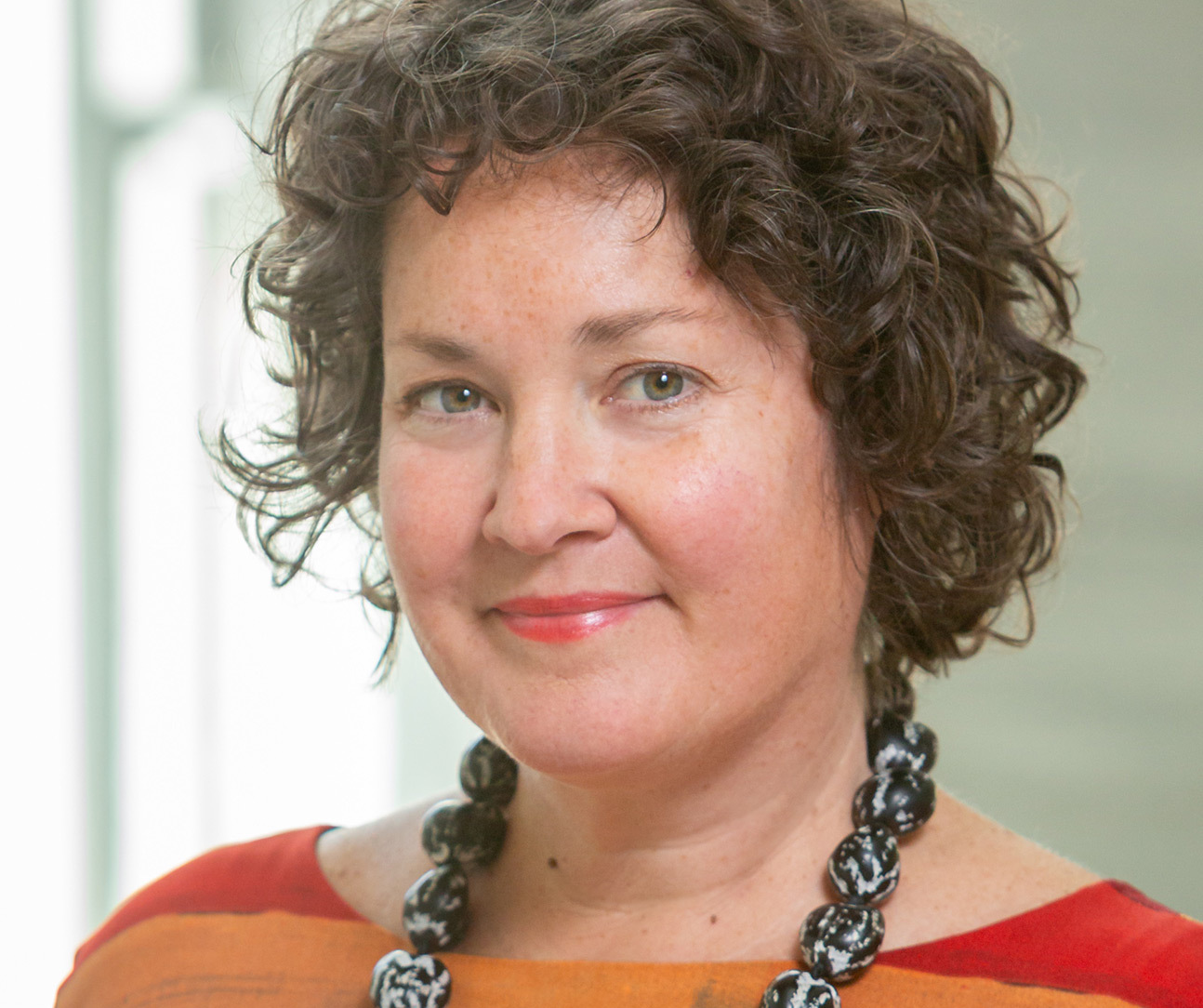As she celebrates the 20-year anniversary of fashion house Alabama Chanin, owner Natalie Chanin has been making plans for the next 20 years of her business.
Chanin’s story is the stuff of movies and TV shows. She left the glamorous life as a fashion designer on New York’s Seventh Avenue and a stylist and costume designer in Europe to move back to her hometown in Alabama. Chanin’s is one of the many inspiring stories that make up Made It: The Women Who Revolutionized Fashion, on view at PEM through March 14.
Florence, Alabama is nested in the foothills of the Appalachian Mountains, on the banks of the Tennessee River, just across from Muscle Shoals, the small town known for the “Muscle Shoals Sound” since the 1960s when the likes of Aretha Franklin and The Rolling Stones traveled there to record. “There is a real history here of creativity,” says Chanin, from her home in Florence.
View Video
With its rich soil along the floodplains of the river, the area produced cotton sent to mills in the north, but some of that cotton stayed south to make underwear for the government, right there in Florence. The women in Chanin’s family worked in the textile mills, as did a large portion of the town. Cotton was grown, picked, spun, knit, cut and sewn there. When the T-shirt became a public fashion statement of outer wear, thanks to stars like James Dean, soon Florence became the T-shirt capital of the world, making T-shirts for labels like Ralph Lauren and Disney. Coupled with it being a mecca for music recording, the town became home to the band T-shirt.

“The music was being recorded on the south side of the river and the T-shirts made on the north side of the river and being shipped to California where these tours were being organized,” says Chanin.
By the mid-90s, the majority of textile jobs had been sent overseas. In “radical decline” was the town of 40,000 residents, where the day care centers, restaurants and gas stations supported the mostly female workforce in the textile industry. “There came a time in America when we started thinking poorly of factory work,” says Chanin. “These people saw themselves as artisans...People raised their families, raised their kids, they made their life here. That kind of fell apart.”
With this backdrop of history, Chanin visited her hometown in 2000, rented a small house and put an ad in the newspaper to hire locals to help with her collection when she couldn’t find manufacturers who could replicate her hand sewing. Interest poured in and soon, small town Alababaians were making one of a kind T-shirts for New York Fashion Week. By 2006, Chanin, pregnant with her daughter, had moved full time back to Florence.

“I’m very grateful that I had this opportunity to do this work,” says Chanin. “It feels meaningful and like we’ve contributed to the community and to the discussion around sustainability, hand work and what we call living arts.”
These days, during the pandemic, Chanin has been living in ribbed slip dresses from her collection, joking that they have been her “uniform” for the last eight months, in addition to an uber comfortable waffle sweatshirt. In March, the company began making masks for hospitals, producing more than 100,000 double layered masks from the organic cotton jersey they have on hand.

In addition to enjoying the countryside, her garden, the area’s history and her surrounding family, Chanin is proud to create something American-made and on a small scale. The resulting garments are organic and mostly handsewn, using sustainable methods and have feminism baked right into their design. If you can’t drive a car in her clothes or pick up your child or your groceries, Alabama Chanin does not make it, says Chanin.
In 2008, Chanin made another daring move by publishing step-by-step guides to make her garments. “Our garments are very expensive, but I was living in a ranch style house on a county road that was our production facility,” she remembers, looking back to the early days. What began as a photocopied guide with hand drawn patterns for the staff, turned into a published series of books on hand sewn garments under the heading The Art of Making.
Photo by Rinne Allen.
Chanin says part of her inspiration came from the early days of free music file sharing. “A lot of people said, ‘That’s the end of your business,’ but we started getting emails and calls,” she says, from those who had a greater understanding of the process. “These techniques could now be preserved. Let’s open source the patterns because we didn’t invent these.” Today, education is a part of the company’s mission statement.
This kind of open sharing, along with doing business in smaller communities, is what Chanin hopes will light a path for young people thinking of a career in fashion. “The secret sauce is showing up every day and working and investing in your people and investing in your community,” she says.
In 2013, Chanin won the Council of Fashion Designers of America/Lexus Eco-Fashion Challenge, which honors American designers who work in the realm of sustainable fashion. Still, she says, the industry has a long way to go toward sustainability. She is also modest about the overall economic impact of her ongoing experiment. “We’re all looking for soundbytes in this economy,” says Chanin. “There have been times when I’ve thought I can’t single handedly recreate American textile on my own. Sometimes it feels like “a drop in the bucket,” compared to the height of the area’s textile industry, says Chanin. Still, the cost of living in Florence, Alabama is low and the quality of life high.
See Chanin’s designs in the PEM exhibition that spans more than 250 years of history. From the inspiring story of Elizabeth Keckley, a former slave who becomes President Mary Lincoln’s personal seamstress, to Ann Lowe, one of the first black designers, who ended up clothing Montgomery, Alabama’s elite, to Claire McCardell, a mid 20th-century designer who created elegant, well-cut and practical clothes that offered comfort and ease of movement, Chanin feels she is in good company and is proud to be part of the ongoing narrative about women’s contributions to the fashion world.

"I’ve always believed,” she says, “that storytelling is so important for empowering."
Learn more about Made It with Natalie Chanin and Petra Slinkard, PEM's Putnam Curator of Fashion and Textiles and Director of Curatorial Affairs, on Open Studio from WGBH.
Keep exploring
Blog
The woman behind the brand
4 Min read

Past Exhibition
Made It: The Women Who Revolutionized Fashion
November 21, 2020 to March 14, 2021



